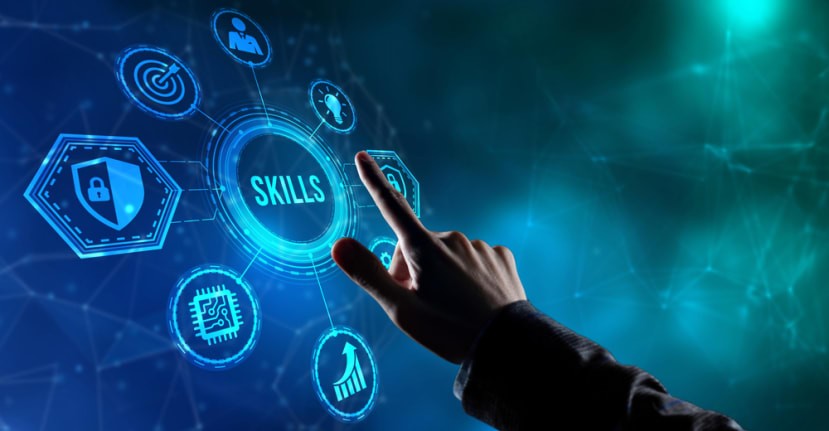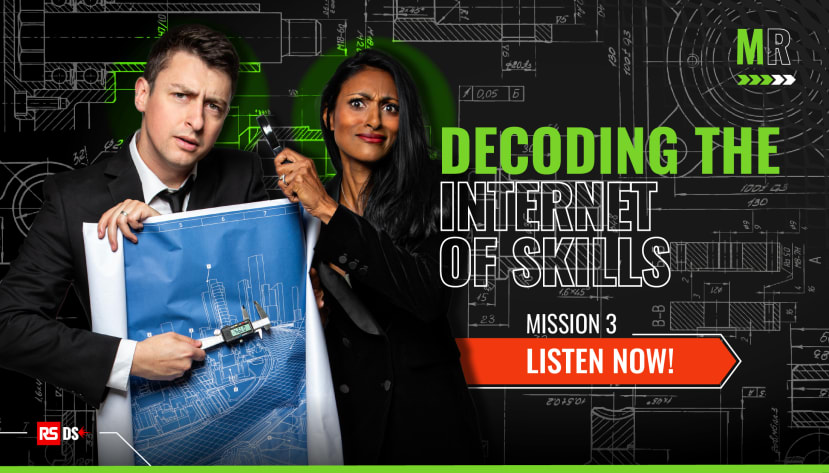Decoding the internet of skills – Long distance learning
Follow articleHow do you feel about this article? Help us to provide better content for you.
Thank you! Your feedback has been received.
There was a problem submitting your feedback, please try again later.
What do you think of this article?
How smart are we?
A world without the internet is just unthinkable now, isn’t it? It’s our ‘go-to’ source for the answer to, well, just about everything. From the expertise to help with homework, research for the next big purchase, to videos explaining how to put up a shelf, it has completely turned how we share knowledge, data and information.
The advances made in connectivity and technology have revolutionised our world, as more and more devices joining the Internet of Things. We can now use smart appliances to run our household remotely, from controlling the heating, running a bath, to interrogating who’s at your front door. The list of smart capabilities are endless – but the more physical skills are not so easy to share in this internet-savvy world – or are they?
If we could overcome physical boundaries to be able to share and execute our skills to anyone, anywhere in the world, think of the possibilities! Spreading expertise globally would not only reduce the need to travel (think of the CO²savings) but could provide valuable resources in the more remote areas and revolutionise our medical capabilities.
Welcome to the Internet of Skills.
Technology, as we’ve never known it before
It all sounds like something from a Sci-Fi movie, doesn’t it? But the advances that are happening in technologies such as robotics, haptic, audio and visual, are helping to make the Internet of Skills more of a reality, than ever before.
These technologies give us the tools to communicate and have the same sensory experience when learning, or being instructed remotely, as if we were physically there ourselves. So, for example, a surgeon located in Stockholm could perform surgery on a patient in Gothenburg and see, hear and feel the same things as if it was being performed in front of him. The possibilities are not just limited to the medical world either, imagine an expert being able to instruct a technician on how to repair a machine remotely, experiencing the same sensations as if they were physically standing with them[1].
The launch of 5G has been key. With the high bandwidth demands required for 3D visual information, the 5G Ultra-Reliable Low-latency Communication (URLLC) standard feature has really contributed to the progress of haptic communications. These low latency networks are crucial in allowing large volumes of data to be transmitted quickly and easily between devices[1]. So, you can see why 5G networks have also been instrumental in helping robotic surgery become more of a reality.
That leads us on to the significant changes being made in VR (Virtual Reality) and MR (Mixed Reality). Already being made affordable in the marketplace, VR and MR devices have now been developed to be capable of capturing real-time, high-quality 3D visual and audio information. Working with the latest audio and haptic technologies you can now experience heightened sensory experiences with motion and textures, to name two, with breath-taking realism.
Mind blown!
What’s out there
There are so many technological and innovative breakthroughs in this area, where can we begin to cover the progress being made with the development of the Internet of Skills?
A really good starting place is the DesignSpark podcast, where you can hear about the advanced teleoperation technologies being developed in the heart of London. Step into a world that is looking at ways to pioneer surgery that can be done remotely. Although there are some limiting factors, such as the availability of 5G networks, which means that we’re not quite able to operate anywhere in the world, the technology is emerging to make that a possibility.
In the podcast, you’ll discover advances being made with haptic gloves, designed to produce sensation in certain fingers. This gives a highly skilled surgeon a clearer understanding of the different tissues he may be cutting into, so he can be super precise while operating remotely. You may shudder at the thought of being operated on in this way – but think of the life-changing possibilities that this could bring to more rural areas, or places where it’s hard to travel!
We’ve touched on robotics, well let us introduce you to Shadow Robot. Sounds like a character from a Marvel movie doesn’t it? In actual fact, Shadow Robot is Britain’s’ longest-running robot company[2]. Launched by a group of passionate hobbyists over 20 years ago, the company builds next-generation robot systems – in particular, robot hands, tackling the challenge of dexterity.
These talented engineers have replicated the human hand with their ‘Dexterous Hand’, using 20 motors and 24 degrees of freedom. In fact, it’s one of the most advanced robotic hands out there and as the name suggests, offers dexterity with such unprecedented accuracy, that it gives the user greater precision and control when manipulating tools and other objects[2].
Used in combination with the ‘Shadow Glove’, you can control the robot hand with such precision, so that it mimics your every move, with minimal latency[2]. Add BioTac sensors and you’ll experience the same sensory information as the human hand, such as forces, micro-vibrations and temperature.
The possibilities that this technology offers for teleoperations are mind-boggling. It opens up opportunities to be able to complete tasks remotely, with the same precise accuracy of human intervention. Uses? invaluable in those challenging areas that we may want to avoid, such as hazardous or sterile environments. The list is endless.
Follow the podcast as one of our agents experiences the technology at first hand (pun intended).
It’s happening now
As mentioned earlier, robotics has been on the cards for medical purposes for ages. Now, with the advancement of 5G networks remote robotic surgery is no longer on our doorstep – it’s over the threshold into reality[3]. With the use of specialised haptic gloves, surgeons can potentially operate on patients thousands of miles away, having the same sense of touch as if they were physically with the patient.
In fact, in 2021 Guy’s and St Thomas’ hospitals in London embarked on the largest surgical robotic programme in the UK. Already performing in the region of 1,100 robotic cases each year, taking loan of a fourth da Vinci robotic surgical system increased the number by 300, using it to help clear the backlog of cancer and complex surgeries caused by COVID19[4].
The Internet of Skills, enabled by WiFi and 5G services, will be key to the transfer and sharing of skills to help others learn. Advancement in these fascinating technologies is continuous, driven by passionate engineers that are making the impossible, possible.
Sources:
[1] The emergence of the Internet of Skills - Ericsson
[2] Shadow Dexterous Hand Series - Research and Development Tool (shadowrobot.com)
[3] 5G remote surgery could be coming to a hospital near you (medicaldevice-network.com)
[4] Largest robotic surgery programme in UK to tackle COVID backlog | Guy's and St Thomas' NHS Foundation Trust (guysandstthomas.nhs.uk)
We would like to credit 'Chris Armstrong' as the researcher for this article.






Comments